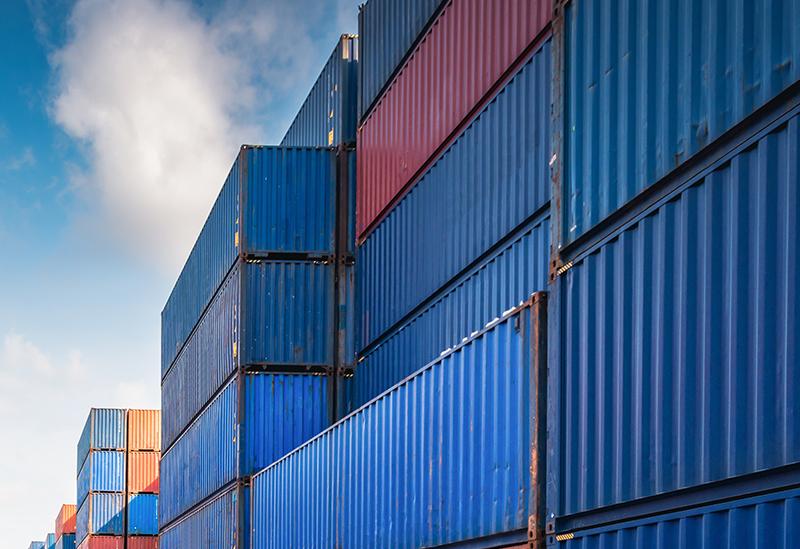Mexico has emerged as an attractive option for higher-value production moving away from China, especially in the automotive and electronics industries, as the country benefits from a highly skilled labor force, close geographical proximity to the U.S. and a recently negotiated free trade agreement. By our estimates, nearly one-fifth of all U.S. imports diverted from China have shifted to Mexico. Since 2018, non-energy imports from Mexico have increased by 46%, or $146 billion, increasing Mexico’s market share of non-energy U.S. imports by 200 basis points (to 16.1%). Furthermore, since 2019, firms nearshoring production to Mexico have leased 52 million square feet, or 7.5% of Mexico’s industrial stock, with these terms leasing 18 million square feet in 2023 alone.
Vietnam and Taiwan have also seen their market share increase as trade has flowed away from China. While the increase in India’s market share has been modest – an increase of 60 bp to 2.8% – we continue to believe that the country will see significant growth in trade with the U.S. over the next decade.
Production shifts away from China are also likely to have impacts on industrial demand in various ports of entry. Like China, most imports from Vietnam tend to enter the U.S. through West Coast ports. However, nearshoring to Mexico is likely to bring greater demand for industrial space near the border and the Texas supply chain hubs of Dallas and San Antonio.
The U.S. Maintains High Tariffs on Chinese Exports
Source: Gallup, as of September 2023
Imports from China have Decoupled from Broader Import Trends
Source: Peterson Institute for International Economics, Chad P. Bown US-China Trade War Tariffs: An Up-to-Date Chart, as of September 2023
Shifts in Domestic Freight Patterns
Assessing domestic changes in the U.S., importers are increasingly diversifying away from West Coast ports due to labor tensions, regulations, warehouse availability and East Coast infrastructure improvements. As this trend progresses, ports on the East Coast and especially in the Southeast--which is also benefiting from population and economic growth-have been aggressively expanding their port infrastructure and capacity, making shipping to these ports more attractive.1 For example, the Georgia Ports Authority plans to increase container capacity from 7.0 million TEUs to 12 million TEUs over the next decade.2
However, despite the growth in port diversification and likely continued market share growth by U.S. East Coast and Southeast ports, we believe that industrial demand in core Southern California locations near the ports of Los Angeles and Long Beach will always remain in high demand for two key reasons. First, ports in these markets continue to offer the cheapest and fastest maritime trade route for goods coming from East Asia. Second, these markets benefit from limited new supply, especially near the San Pedro Bay port complex.
Overall, we expect that shifts in industrial demand across the U.S. will continue to be incremental. We anticipate that this trend will expand the market opportunity for industrial broadly with the East Coast and Southeast ports growing in favor. Further, we believe Southern California industrial will continue to maintain a strong demand foothold, but do not expect the same dramatic growth in market share as seen historically.
Savannah has Added the Most New Supply Within 10 Miles of Their Port
Sources: CoStar, distance from the port is “as the crow flies” and actual driving distances will be further, as of September 2023. For illustrative purposes only. There can be no assurance that such trends will continue.
Population Growth Accelerating Relative to the Rest of the U.S. Post-Pandemic
Source: Census Bureau, as of September 2023.
Post-Pandemic, GDP in the Southeast Outpacing U.S. Average
Source: Bureau of Economic Analysis, as of September 2023.
Reshoring & Nearshoring
The CHIPS Act and the Inflation Reduction Act have generated over $500 billion in new investment in U.S. manufacturing, spurring capacity adds in advanced industries such as semiconductors, autos, batteries and other parts of the green energy supply chain. Real manufacturing construction spending is up 60%, an all-time high, and is expected to remain elevated for the next several years as planned projects break ground. Alongside the dramatic uptick in spending, new investments are occurring in historical manufacturing hubs such as the Midwest and Southeast as well as in the Southwest and Mountain states.
Further, policy investment from the CHIPS Act and Inflation Reduction Act is expected to generate in the range of 200,000-250,000 new jobs over the next two years, prompting significant demand for a highly skilled and educated work force. Alongside these developments, we would expect continued focus on “industrial policy” as lawmakers seek to create high-paying jobs in the U.S. and help build resilient supply chains.
At a local level, economies have experienced a boost in consumption given the population influx in skilled manufacturing workers with relatively high incomes. Additionally, the uptick in land intensive factories in these areas and the related need for support by suppliers that occupy logistics properties has led to a significant reduction in the supply of competitive land that could otherwise be used for industrial. This has unsurprisingly exacerbated the demand for regional warehouse space.
With an influx in manufacturing factories, we would also expect to see local investments in regional transportation infrastructure to support and attract new manufacturing facilities. Consistent with the pattern that has emerged over time, we would expect these infrastructure improvements to further attract logistics tenants that also benefit from them, ultimately perpetuating greater overall demand for industrial in these manufacturing regions.


